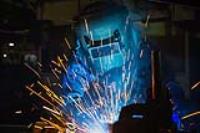 Add My Company
Add My Company
Sign In

It’s a question asked by many welders who are just starting out in their craft. Regardless of whether you’re welding for a career or as a hobby, it’s important to understand the differences between these two. Understanding which gas to use in which situation will ensure that you are able to weld efficiently and safely.
MIG and TIG Welding both use shielding gases. These gases ‘shield’ the weld pool from the effects of the surrounding natural atmosphere which causes oxidation and nitrogen absorption. The names MIG and TIG come from the gases used in the welding process:
MIG – Metal Inert Gas
TIG – Tungsten Inert Gas
You may know of inert gases as noble gases from the periodic table. These are gases which do not react with many substances and are therefore useful when trying to protect your weld from the atmosphere. Since inert gases do not react with your welding material, blasting them out of the nozzle of your welding gun creates a reaction-free atmosphere for your weld. There are six noble gases, but out of these six, only helium and argon are cost-effective.
Be aware that this type of welding is not suitable for the outdoors, as a strong breeze could poke holes in your protective inert gas barrier, causing problems with your weld.
Electrical welding
MIG Welding Gas
MIG Welding works through the consumption of the electrode wire. The electrode wire is fed from its spool to the arc zone. The arc zone is the space between the electrode and the workpiece where immense heat is generated by electricity. This electricity is called the electric arc, which is a luminous discharge between the electrode and the workpiece, travelling through an ionized gas.
MIG welding gas is usually comprised solely of Argon, Helium, or CO2, but gas mixtures are also common, such as Argon + Oxygen. The astute reader may note that CO2 and Oxygen are not noble gases. CO2 and Oxygen are actually described as semi-inert gases, along with nitrogen and hydrogen. A controlled quantity of semi-inert gas can improve your weld, but too much will cause damage instead.
Now we’ll take a look at how the properties of the gases you can use in MIG will affect your welding process.
Argon
Argon is relatively heavy compared to air, so it needs a low flow rate. Argon gas ionizes easily, making it a great choice for welding as good ionization means a stable electric arc, a narrow arc cone and a narrow penetration profile, giving you a more precise welding experience.
Pure Argon gas is a common choice for welding nonferrous metals, and adding a controlled amount of helium to your Argon gas will improve Argon’s rather poor low thermal conductivity rates, giving you better heat transfers in your weld.
Helium
Helium gas is lighter than air, so as opposed to Argon, it requires large flow rates. This means that more Helium is used in the welding process, making it less cost-effective. Helium is not easy to ionize, so it requires a higher voltage to start the arc, which when started is quite erratic, encouraging spatter when working with some metals.
On the other hand, Helium has a high thermal conductivity, which Argon does not. A combination of these two gases provides a gas which compensates for the drawbacks of its individual compounds.
Oxygen
Not to be used on its own, Oxygen can be combined with Argon at around 2-5% to improve Argon’s arc stability. Too much oxygen will lead to porous deposits, which means that your weld could have trapped bubbles of air which make it more brittle.
Carbon Dioxide
Like Oxygen, CO2 is recommended when blended with Argon. It encourages a deep weld but makes the arc more unstable and produces smoke fumes.
Nitrogen
Nitrogen increases weld penetration and arc stability. Not to be used on carbon steels, Nitrogen gas works well as a blend and on alloys which already contain Nitrogen.
Hydrogen
Many alloys and carbon steels may become more brittle from using Hydrogen in your weld, but it is useful when added to Argon-carbon dioxide gas, as it counteracts the oxidation created by introducing the CO2 to Argon.
green Argon gas bottles in a line
TIG Welding Gas
TIG welding gas is usually 100% Argon. It is important to recognise that TIG welding does not work well with any CO2 mixtures, because the CO2 will affect the tungsten electrode. Unlike in MIG welding, TIG electrodes are non-consumable, and the weld pool is fed by hand. As a result, you don’t want to affect the electrode in TIG welding so gases which do not react with Tungsten are vital. TIG is harder than MIG welding but provides better results if done by a professional.
Argon
The fan-favourite of TIG welders, 100% Argon gas is most popular in TIG welding.
Helium
An Argon and Helium mixture can be used in MIG as well as TIG welding.
Hydrogen
A maximum of 5% Hydrogen mixed with Argon is sometimes recommended, as it increases the heat input and protects against oxidation.
MIG vs TIG
Both welding practices have their uses, pros and cons, but when working with TIG welding your options for welding gas are significantly limited due to the Tungsten electrodes. If you’re a hobbyist welder you might want to start with MIG welding, as its semi-automatic process requires less skill, but more options for experimentation in your choice of gas. TIG is recommended for experienced welders, as it is harder to master but provides a stronger weld, making TIG welding a good skill to practice for those in the welding trade. Adams Gas supplies a range of pure gas and gas combination bottles to suit your welding preferences.
For more information on WHAT’S THE DIFFERENCE BETWEEN MIG AND TIG WELDING GAS talk to Adams Gas
Enquire Now
List your company on FindTheNeedle.

